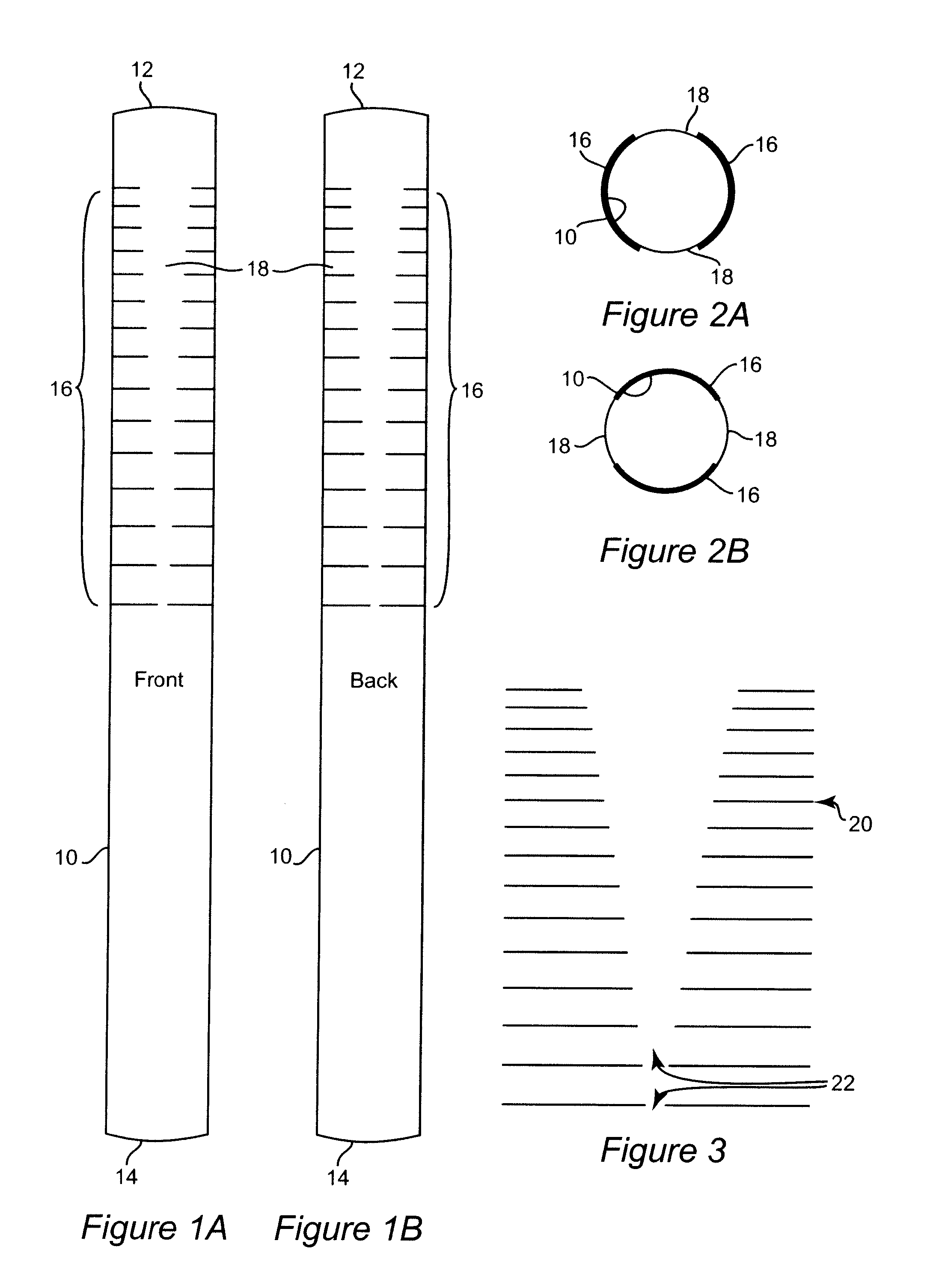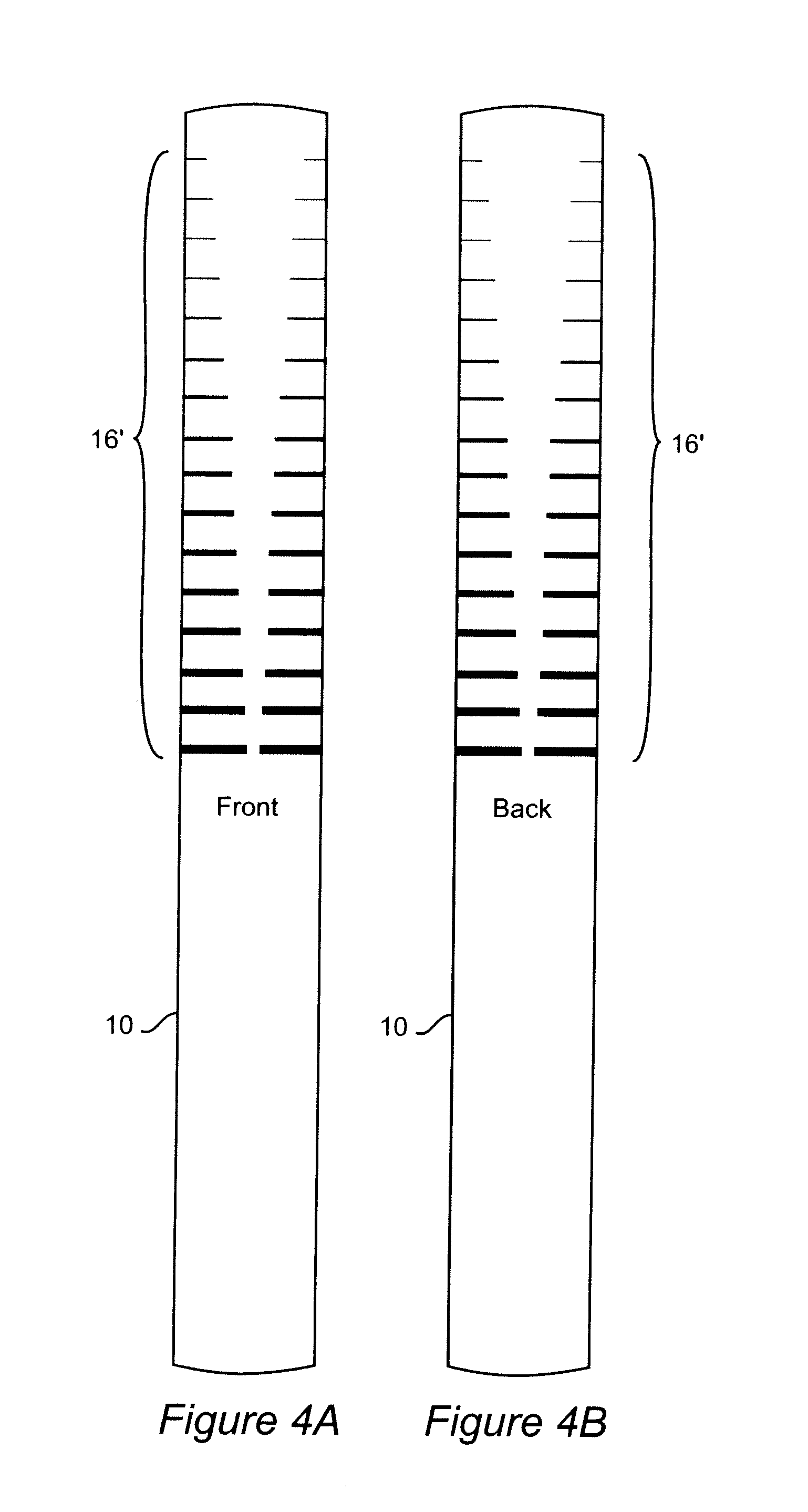Catheter for Enhanced Image Location Detection
a technology of enhanced image and location detection, applied in the field of catheters, can solve the problems of limited use of surface features and markings, 1i>b /i>of stubbs, etc., and achieve the effects of improving image location detection, highlighting different horizontal markings, and easy differentiation of markings
- Summary
- Abstract
- Description
- Claims
- Application Information
AI Technical Summary
Benefits of technology
Problems solved by technology
Method used
Image
Examples
Embodiment Construction
[0017]FIGS. 1a and 1b respectively show the front and back side of a catheter 10 having a proximal end 12 and distal end 14. Horizontal markings 16 are shown on the catheter 10 towards the proximal end 12. The horizontal markings 16 each have a gap 18 on the front surface (FIG. 1a) and back surface (FIG. 1b) which are in alignment with a diameter through the front and back surfaces. For exemplary purposes, the gap 18 is shown to be progressively larger towards the proximal end 12 of the catheter 10; however, it should be understood that the gap 18 could be progressively smaller towards the proximal end 12. Contrasting the catheter of FIG. 1a with the catheter of FIGS. 6a and 6b, in some applications the gap 18′ may be constant or may change in some other fashion than becoming progressively larger or smaller. With further reference to FIGS. 1a and 1b, in one embodiment the horizontal markings 16 are progressively closer together towards the proximal end in terms of the lengthwise or ...
PUM
 Login to View More
Login to View More Abstract
Description
Claims
Application Information
 Login to View More
Login to View More - R&D
- Intellectual Property
- Life Sciences
- Materials
- Tech Scout
- Unparalleled Data Quality
- Higher Quality Content
- 60% Fewer Hallucinations
Browse by: Latest US Patents, China's latest patents, Technical Efficacy Thesaurus, Application Domain, Technology Topic, Popular Technical Reports.
© 2025 PatSnap. All rights reserved.Legal|Privacy policy|Modern Slavery Act Transparency Statement|Sitemap|About US| Contact US: help@patsnap.com



